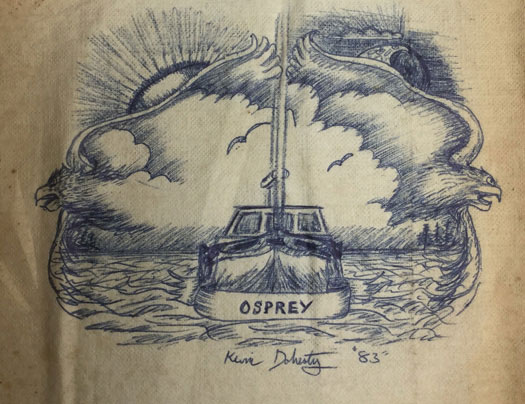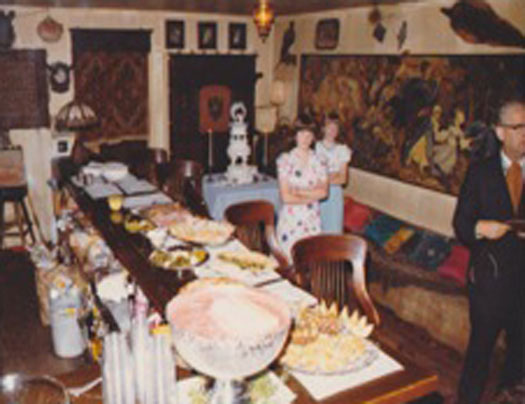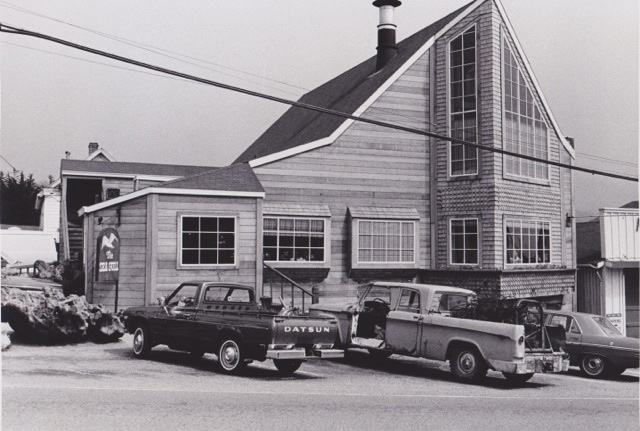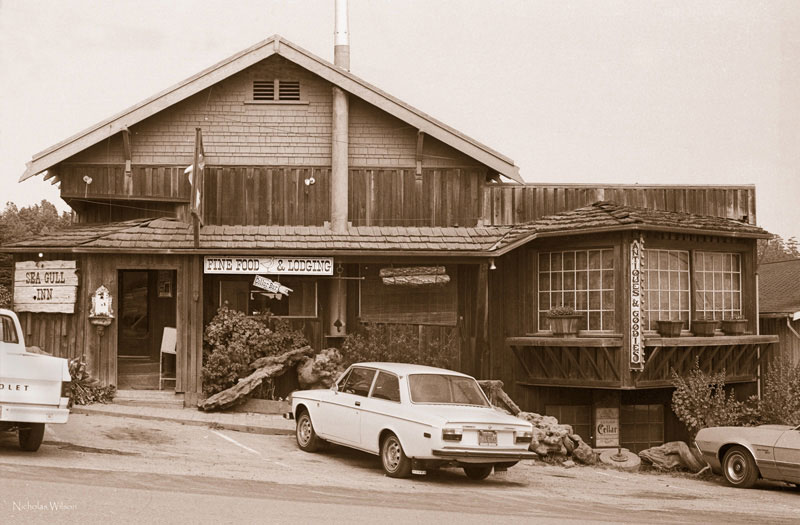I had a restaurant in Mendocino, along the edge of the northern California coast. I took that from Isak Dinesen’s first line in Out of Africa. I changed it a bit. I highly recommend you read every single one of her stories.
Mendocino lies at the southern end of the Cascadia subduction zone, earthquake country, and its geology was formed in part by earthquakes throughout millions of years. Most who live here know that a big earthquake will come sometime and change life as we know it. I’m sure that affects how we think.
Any day on the coastal plains, you can feel the ocean anxiously pounding at the rocky bluffs below. Mist sprays all the way to the top of the rugged cliffs and fills your nostrils with the smells of salt and seaweed. The sounds of an osprey overhead carry your vision beyond the grassy fields up into the hills and low mountains that are clothed in evergreen forests and hundreds of square miles of Redwood trees, the oldest and tallest trees we know. This unique ecological landscape created a semi-isolated, semi-wild magical land separate from but connected to California and the wider world. This is where the Sea Gull was born, lived and died.

Sea Gull Cellarbar, Napkin Art, Kevin Doherty
The old Sea Gull Cellarbar was often compared to an opium den. Martin and Marlene Hall took the theme for the bar in part from the Marrakech restaurant in San Francisco during the culture changing years of the 1960s. The floor and even the benches along the north and south walls were covered with oriental carpets. Patrons rested their drinks on round brass tables. The walls were adorned with bizarre and unusual stuffed animal heads acquired from the Snow Museum in Oakland when the museum closed in 1967.
The 1850 sinking of the Frolic, a sailing brig in the opium trade, spurred developoment along the Mendocino coast. An opium den thus had some historical basis although I’m not sure that’s what the Halls were thinking. To my knowledge no opium was ever consumed at the Sea Gull, but I’ve heard other drugs were used there. The word frolic is a fair description of what went on in the bar some of the time. At other times, the bar could take on a regular family atmosphere.

Reception in the original Sea Gull Cellarbar
The corner of Lansing and Ukiah streets in Mendocino slices the town into four quadrants. The southwest is mostly commercial, the northwest mostly residential, and the two quadrants to the east are a mix. The Sea Gull was located on the southeast corner. This corner had a long and colorful history. A hotel was built there by Hamilton Beaver in 1879 but it burned down the very next year. A well-known blacksmith, Jacob Stauer, owned the corner and much of the real estate nearby.
Sometime shortly after the First World War, Stauer sold the corner to Reverend Roland E. Smith. Rumor had it that Smith (or Smythe) had come from England “under some sort of social and/or moral cloud.” Smith also owned a small farm or orchard near Sebastopol. He had a produce store in Mendocino where he sold fruits and vegetables from his farm. That operation expanded to include a grocery and meat department.
Smith was a spiritual as well as a secular entrepreneur. In 1923, he constructed a Gospel Hall “for the purpose of preaching to the heathen and the heretic.” Apparently the heathens and the heretics were not great fans of the gospel. The hall stood vacant and silent until sometime after the Volstead Act when Manuel “Shine” Silva transformed the church into a tavern for the selling of beer and wine. He called it The Little Place, and it quickly became popular. Nothing like booze to attract the crowds. The building doubled as a Greyhound bus station.
In 1961, the property was sold to Clarence Mattison who converted the tavern into a Mexican restaurant called Casa Mendocino, but that didn’t last long. Martin and Marlene Hall bought the property and business from Mattison in 1962 and expanded the building to include a dining room and cellar bar. Over the next two years, Martin, with the help of local carpenters Claude Drake and his son, converted the family residence on an adjoining property into rooms for tourists and renamed the new operation the Sea Gull Inn.
They sold the business to Anita Klauss, a Los Angeles patron who, like so many urbanites, was looking for a peaceful life in the country. Klauss soon found managing the operation was more stressful than city life. She moved back to Los Angeles. The Halls took back the restaurant as their own and managed the rooms for Klauss.
In 1973, when a cheeseburger sold for $1.65, I purchased the Sea Gull from Martin and Marlene Hall. The stories I have to tell are mostly from that time forward. If you were an employee, a customer, or just a tourist passing through, some of these stories may sound familiar. They are my recollections and stories and not meant to be the “gospel” truth. Any gospels preached on the southeast corner of Lansing and Ukiah streets disappeared with Reverend Roland E. Smith.
A fire on December 12, 1976 destroyed the original Sea Gull Restaurant building. A new building was constructed in record time and the Sea Gull reopened in the summer of 1977. The Sea Gull Restaurant was sold again in 1985 to Jim and Rochelle Marquardt. The restaurant closed in the early 90s.

The new Sea Gull building constructed by David Clayton and crew, 1977
You may have your own stories of those unique times in Mendocino during the 70s and 80s. If you’d like me to post them on this website, please email them together with your authorization to dhj@thinkinthemorning.com. If you prefer, I’ll write your story and add anything I think is appropriate. I cannot guarantee it will be posted or that I will respond to all emails. If I do post it, you will receive credit and notification.


PRINTED THIS ONE OUT FOR MY SCRAPBOOK THANKS
The Sea Gull was a fixture when Annett and I relocated to the Coast from Ukiah. I came over to open the branch office of the District Attorney, which I administered for 10 years.
I handled all matters in the Ten Mile court in Fort Bragg and the Big River court in Mendocino. The Judge of the Big River court was my friend and mentor Embree Reynolds.
Tony Miksak and I, along with Jane Gardner and John Birchard, were the founders of the Mendocino String Quartet. One of our regular gigs was playing Sunday evening (for dinner) in the Beauj.
My office was in Fort Bragg, but I needed to meet with witnesses and community members on a regular basis and sometimes folks had a difficult time getting up to Fort Bragg. I would try to meet with people in the village on the days when Big River court was in session. The best place to meet was down in the Cellar Bar. It was fairly deserted during the day and I would be able to have private meetings with people before and after court sessions over coffee. Kathy was always very welcoming. And after awhile I started having regular office hours in the Cellar Bar. “Occasionally” I might enjoy an Irish Coffee every now and then. This was the Mendonesia branch office of the District Attorney.
Hello,
I noticed your large collection of art by Estelle Grunewald on your website. I have an oil painting of hers that I purchased in the 60’s that she titled “Hot Town”. I am in the process of downsizing and thinning out my possessions. I would like it to be in the hands of someone who appreciates her work. Are you interested?
I love Estelle’s work. Miss her terribly. But, I’m also downsizing. Thanks for the offer but my walks are full.